Artist Pritika Chowdhry’s powerful series of installations address the realities of historical violence and trauma. Find more of her work on her website.
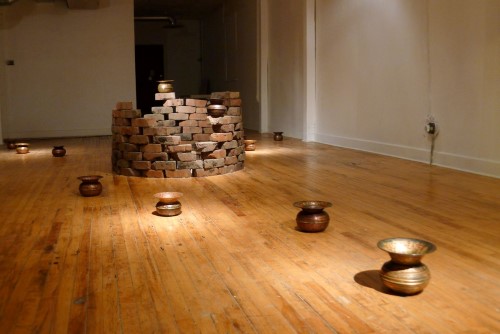
“An Archive of 1919” (view 1) brick, enamel and brass, variable dimensions
My work is deeply informed by Michel Foucault’s thinking on counter-memory, a kind of memory that undercuts dominant historical narratives. In my ongoing series, The Partition Anti-Memorial Project, I consider the following—how can we use art to uncover subjugated knowledge and untold stories? How does one memorialize traumatic events without feeding into nationalist, hegemonic narratives?
While many war memorials use a nation’s difficult history to justify their own aggression, my Partition anti-memorials do the opposite. I hope to educate viewers, and leave them with an impression of the magnitude of these events.
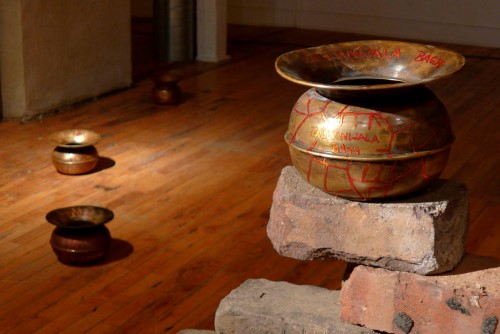
“Jallianwallan Bagh” brick, enamel and brass, variable dimensions
While I now live in Chicago, I was born in India. Growing up, the partition of India was always a taboo. My mother’s family migrated from Karachi during the Partition, while my father’s family migrated to Calcutta in the first Partition of Bengal. When I learned what my family members lived through as an adult, I was shocked and horrified.
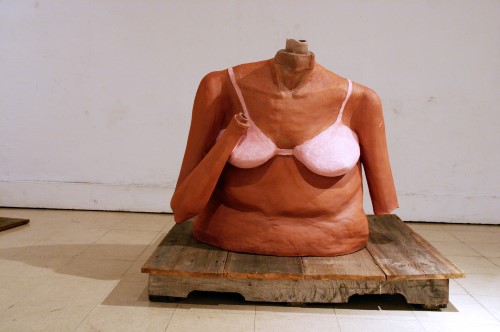
“Queering Mother India” (view 1) ceramics, raw clay, wood and paper, variable dimensions
During Partition, rape and gendered violence became a political weapon to enforce subjugation. I am particularly focused on drawing attention to these experiences, which are too often left out of discussions of Partition.
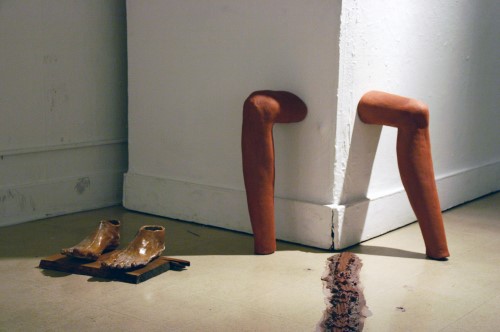
“Queering Mother India” (view 2) ceramics, raw clay, wood and paper, variable dimensions
In my piece, “Queering Mother India,” I challenge the common association of the nation with masculinity and manhood by representing India as the severed body of a woman.
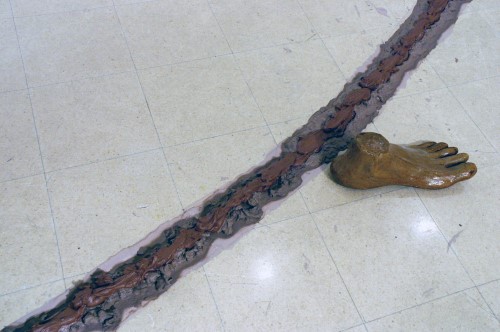
“Queering Mother India” (view 3) ceramics and raw clay, variable dimensions
By associating the dividing lines of Partition with an assault on the female body, I emphasize the violent ramifications of British colonial rule.
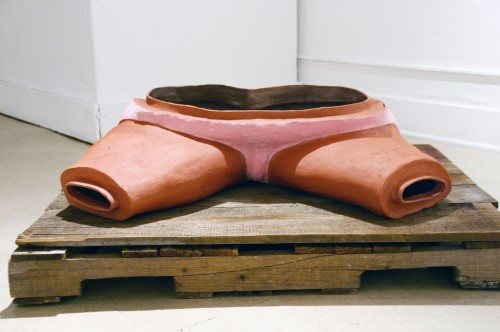
“Queering Mother India” (view 4) ceramics, raw clay, wood and paper, variable dimensions
I locate nationhood within survivors of violence, rather than within military power, writing back against existing narratives and traditional methods of reconciling historical trauma.
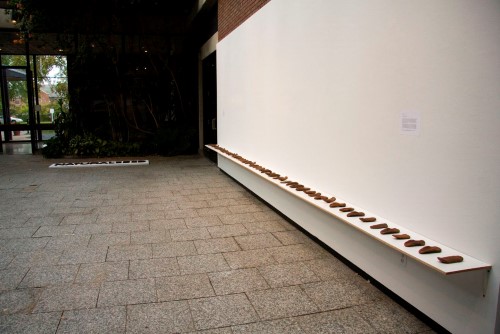
“The Masters Tongues” (view 1) cast iron, variable dimensions
In 1999, I moved to the United States. In 2002, the Gujarat Pogrom took the lives of over 2,000 people in India. The event pushed me to think about the ongoing ramifications of Partition and the surprising lack of awareness of Partition within America. In 2007 while I was pursuing my MFA in Studio Art and an MA in Gender Studies and Visual Culture, I decided to found the Partition Anti-Memorial Project.
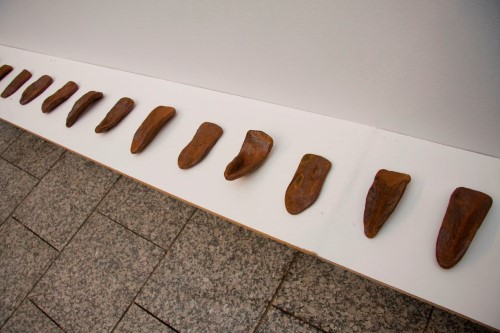
“The Masters Tongues” (view 2) cast iron, variable dimensions
Thus far, I have made nine installations for the Partition Anti-Memorial Project that unpack various facets of the Partition, highlighting historically excluded voices. In these experiential installations, I work with a diverse set of materials that speak to the events themselves.
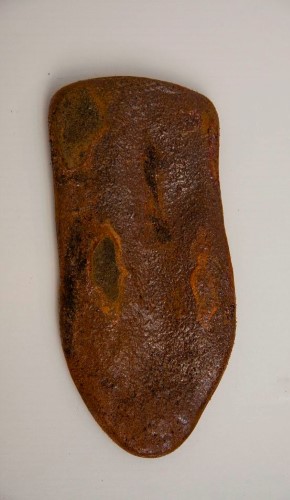
“The Masters Tongues” (view 3) cast iron, variable dimensions
For example, in “The Masters’ Tongues,” I cast 79 tongues in iron, a tool of British industrial times. This year marks the 75th anniversary of the Partition of India. I will be exhibiting works from the Partition Anti-Memorial Project at South Asia Institute, Weisman Art Museum, Art Show International, Woman Made Gallery, ARC Gallery, Chicago Art Department, and Highland Park Art Center.
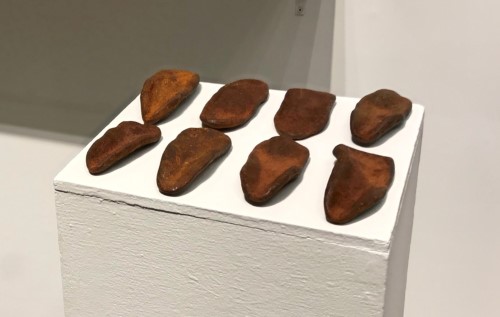
“The Masters Tongues” (view 4) cast iron, variable dimensions
I am also producing new work highlighting the Radcliffe Line, the border created by Sir Cyril Radcliffe in 1947 that divided British India into India, East and West Pakistan. In 1971, East Pakistan became Bangladesh after a bloody and violent Liberation war, which was essentially a Partition of Pakistan. This new body of work comprises of neon sculptures, wall drawings and a new sculptural poem.
Artist Pritika Chowdhry invites you to follow her on Instagram, YouTube and Facebook.


Speak Your Mind